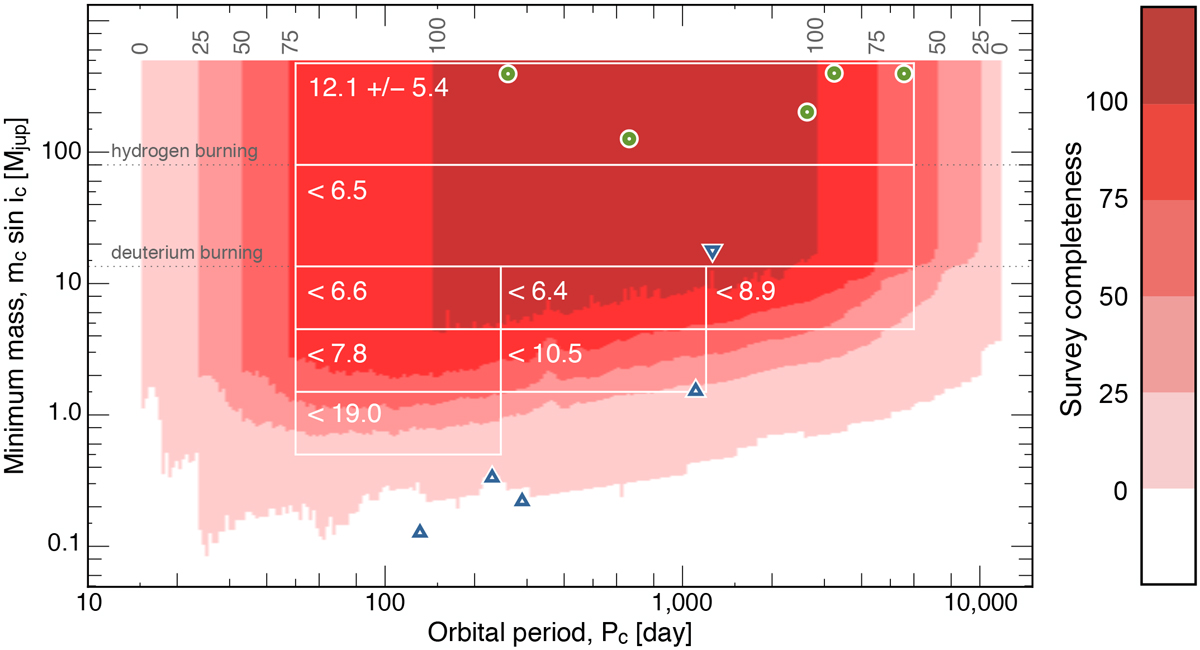Fig. 10

Completeness of the BEBOP radial velocity survey of 47 low-mass eclipsing binaries, as a function of the circumbinary minimum mass and period. Six different colour contours indicate the programme completeness between 0% (white) and 100% (dark red). The green circles near the top of the plot correspond to the five BEBOP triples, that is binaries with well-characterised tertiary stellar companions. The upright blue triangles in the bottom half of the plot represent the four Kepler transiting circumbinary planets with published masses: Kepler-16, -34, -35 and -1647. The inverted blue triangle represents the circumbinary brown dwarf HD 202206 (mc = 17.9 MJup, Pc = 1261 days) discovered using a combination of RVs and astrometry (Correia et al. 2005; Benedict & Harrison 2017). There are eight white boxes covering different parameter spaces within which we constrain the abundance of tertiary objects. The number in each box is the 2σ upper limit to the circumbinary abundance, given as a per cent. An exception is the top box which covers triple star systems. Since we have detections in this box, we derive an actual value for the abundance and its 1σ uncertainty.
Current usage metrics show cumulative count of Article Views (full-text article views including HTML views, PDF and ePub downloads, according to the available data) and Abstracts Views on Vision4Press platform.
Data correspond to usage on the plateform after 2015. The current usage metrics is available 48-96 hours after online publication and is updated daily on week days.
Initial download of the metrics may take a while.


